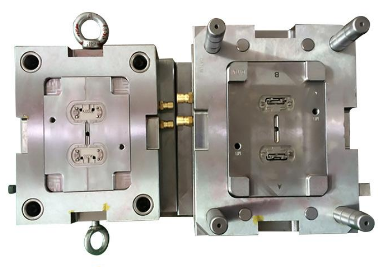Injection Molding, also known as injection molding, is a widely used plastic molding process. This process is suitable for producing large quantities of identical or similar plastic products, such as containers, pipes, wire insulators, automotive components, etc. The basic steps of injection molding process include plastic preparation, operation of injection machine, Mold design and manufacturing, and post-molding treatment. Firstly, the core of injection molding technology is the melting and injection of plastics. During this process, plastic particles are placed into the hopper of the injection machine and pushed into the preheated barrel by a screw or plunger. In the barrel, plastic particles are heated to a molten state, forming a flowing plastic melt. When the plastic melt reaches the appropriate temperature and pressure, the injection cylinder of the injection machine will quickly push it into the mold cavity.

During the injection process, the plastic melt rapidly fills the mold cavity under high pressure. As the melt cools and solidifies, the mold cavity is gradually filled, forming the required plastic product. After the injection is completed, the mold will open and eject the formed plastic product. Subsequently, the mold will close again and prepare for the next Injection Process. The advantages of injection molding technology are high production efficiency, short molding cycle, and the ability to produce complex shaped products. However, there are also some challenges in the injection molding process, such as controlling the fluidity of plastic melt, designing and manufacturing precision of molds, and potential defects that may occur during the injection process. Therefore, the injection molding process requires experienced operators and advanced equipment to ensure product quality and production efficiency. During the injection molding process, temperature, pressure, and time are key factors that affect product quality and molding effectiveness. Excessive or insufficient temperature can lead to poor fluidity of plastic melt, affecting the quality and dimensional accuracy of the product. The magnitude of injection pressure determines the flow rate and filling effect of plastic melt in the mold. A short injection time may lead to voids or incomplete filling inside the product, while a long time may cause burrs or deformation on the surface of the product. In addition to traditional injection molding processes, with the development of technology, some new injection molding technologies have also emerged. For example, in the injection molding process of thermoplastic materials, additive manufacturing (3D printing) technology can be used to manufacture complex mold structures, thereby further reducing production costs and improving production efficiency. In addition, some advanced injection molding equipment is also equipped with intelligent control systems, which can monitor various parameters during the injection process in real time, automatically adjust process parameters to ensure product quality and production efficiency. In short, injection molding technology is an important plastic molding technology with broad application prospects. By deeply understanding the basic principles and influencing factors of injection molding technology, as well as continuously optimizing the injection molding process and quality control methods, we can further improve the quality and production efficiency of injection molded products, and meet the growing market demand.
